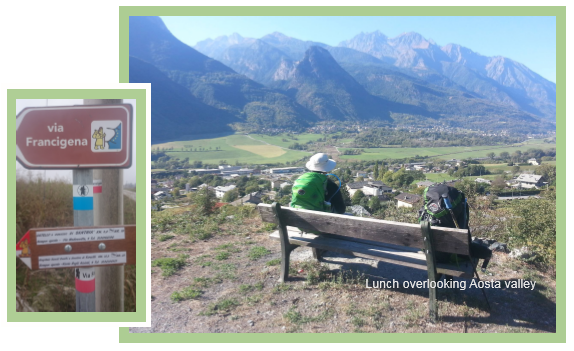
Over six weeks, from late September to early November 2016, my wife Phillipa, and I, walked a large chunk of the ancient pilgrim trail, the Via Francigena. The original route, from Canterbury to Rome, was walked by Sigeric the Serious, ordained Archbishop of Canterbury in 990 CE. He kept travel diaries and these are considered the most authoritative source for the direction of the route. The trail starts at the Canterbury Cathedral, runs through Northern France, Switzerland, down Italy and onto Rome. In the 12th century this pilgrim route was as popular as the Camino Santiago de Compostela in Spain is now. I’ve heard that more than 5000 people a day start the Spanish Camino these days, so the Via Francigena (20 people a day) would have been a very well trodden route in the past. In subsequent centuries making a pilgrimage fell from fashion and the routes and paths of the Via Francigena became overgrown and only used by local traffic.
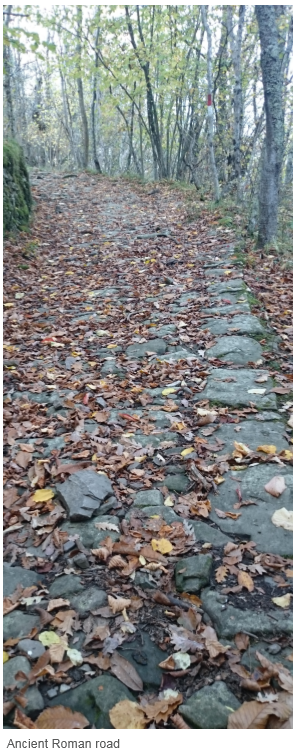 In 2006, while on a visit to Italy, we heard that an ancient pilgrim route running the length of Italy to Rome was being revitalised due to the popularity of the Spanish Camino. Turns out this was the VF. The Vatican urged church congregations along the old route to help rebuild the paths and set up pilgrimage hostels along the way, and the Pope declared 2015 the Year of the Pilgrim, which just happened to coincide with our plans.
In 2006, while on a visit to Italy, we heard that an ancient pilgrim route running the length of Italy to Rome was being revitalised due to the popularity of the Spanish Camino. Turns out this was the VF. The Vatican urged church congregations along the old route to help rebuild the paths and set up pilgrimage hostels along the way, and the Pope declared 2015 the Year of the Pilgrim, which just happened to coincide with our plans.
We walked the Via Francigena for adventure, not for religious reasons, although we followed the pilgrim protocols and enjoyed the hospitality and kindness of ordinary parishioners, lay workers, nuns and monks along the way. Long distance walking is not hiking. And it’s not adventure travel in the sense of delivering big adrenalin thrills. It’s a slow travel pastime, one which allows the walker a close up experience of the land and culture they are walking through. Which suited us perfectly.
At times it was hard physically and emotionally, and at times it was boring, fascinating, frustrating, humorous, spiritual and exhausting. By the end we felt we had travelled through time as well as space, traversing a land that had been occupied, invaded, occupied, and fought over dozens of times since humans came to Europe just after the Ice Age. Like reading a book from a previous century, it was hard at first, challenging in its pace, but ultimately a unique experience, one where the simple day after day walking routine eventually added up to a profound whole.
A trip like this, as with most walks, requires preparation. It is an easier prospect for Europeans who might walk the whole route over a number of years in their summer holidays, but for Australians, we have to factor in a long haul, expensive flight and a language barrier which can be quite pronounced in the rural and regional areas. Our experience of the Via Francigena was definitely made easier because I speak Italian, however many, many people walk the Via Francigena without it and manage really well. But whatever your language skills it pays to be prepared.
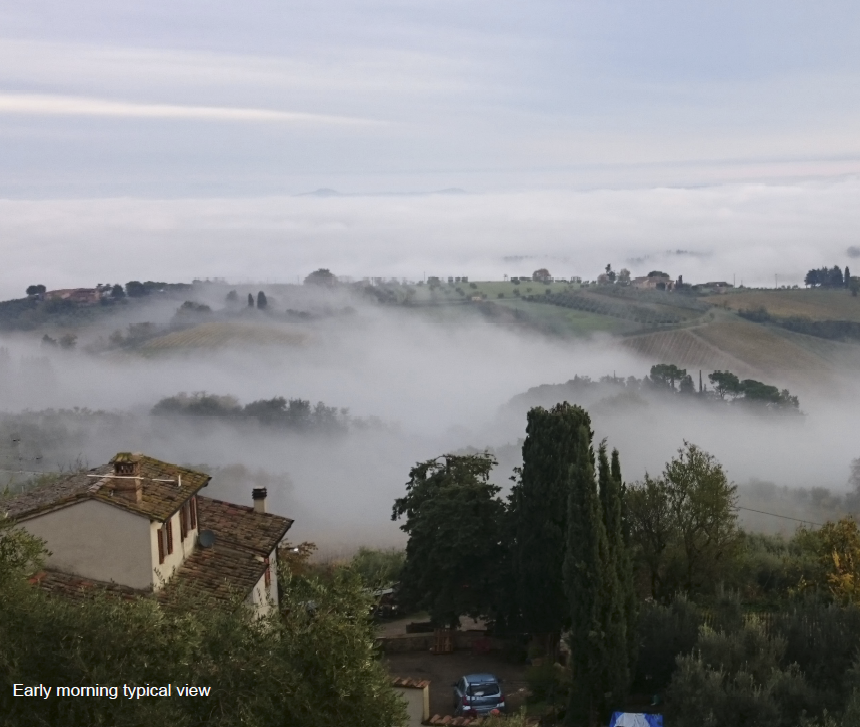 We read some of the guides, of which there are several, followed the blogs of those who have walked and were blogging while they walked, and used the Facebook public group Via Francigena. Armed with an overview westudied the route and decided which parts we wanted to cover in the time we had available. The VF is not as popular as the Spanish Camino, that may change, however the route is not full of cheap hostels like the Spanish Camino and just turning up somewhere and hoping for the best can prove unpredicatable.
We read some of the guides, of which there are several, followed the blogs of those who have walked and were blogging while they walked, and used the Facebook public group Via Francigena. Armed with an overview westudied the route and decided which parts we wanted to cover in the time we had available. The VF is not as popular as the Spanish Camino, that may change, however the route is not full of cheap hostels like the Spanish Camino and just turning up somewhere and hoping for the best can prove unpredicatable.
Starting at Canterbury Cathedral in England, walking across France and then crossing the Swiss Alps and walking down through Italy is a route of approximately 2000 kms. We had five weeks. Naturally we disagreed about where to start and where to finish, but after a conversation over manyweeks involving flat refusals, shrewd bargaining and shameless bribery we ultimately brokered a deal we could both accept.
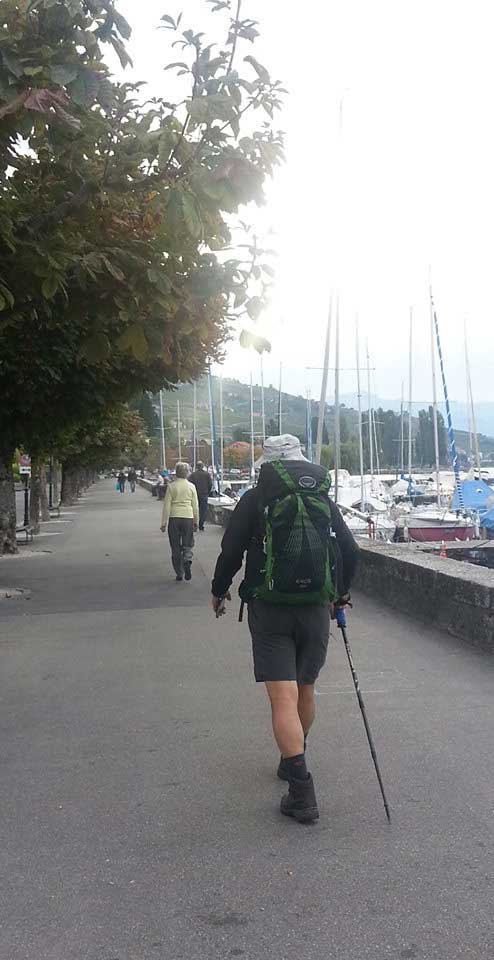 The walk through the Swiss Alps provides some of the most scenic parts of the whole Via Francigena, so the plan was to start the walk in Lausanne, a medium sized Swiss city on the shores of Lake Geneva. We flew Qatar Airways from Sydney to Doha and from Doha to Rome. We should have flown in to Geneva but bought early bird fares before fine tuning our route. This gave us the opportunity however to sample the delights of the cut price Spanish airline, Vueling, from Rome to Geneva.
The walk through the Swiss Alps provides some of the most scenic parts of the whole Via Francigena, so the plan was to start the walk in Lausanne, a medium sized Swiss city on the shores of Lake Geneva. We flew Qatar Airways from Sydney to Doha and from Doha to Rome. We should have flown in to Geneva but bought early bird fares before fine tuning our route. This gave us the opportunity however to sample the delights of the cut price Spanish airline, Vueling, from Rome to Geneva.
From Geneva we caught a train to Lausanne and there we rested for a day before setting out.
We carried everything we needed in two small packs, lightweight travel clothes, wet weather gear, toiletries, Kindle, phones and chargers, a jet boil burner for making cups of tea – Phillipa declared she could not cross the Swiss Alps without a cup of tea, and Italians don’t do tea very well – plastic mugs and powdered milk. We bought a knife and purchased bread, cold meats, cheese fruits, pasty and so on, to make our own lunches. Each pack weighed between six and seven kilos. Plus we each carried walking poles and water bottles.
Although we were not strictly pilgrims in a religious sense we did get our pilgrim credential which was required for some of the accomodation. We had it stamped in all the accredited pilgrim accommodation and if we had continued onto Rome this credential would have certified our pilgrim status and allowed us to receive the Pilgrim Testimonium and a private audience with the Pope, along with five hundred others.
We had booked our accommodation for the first week in advance and then thereafter it was left to me to ring and book our next night’s accommodation each evening. I had lists of possible hostels and hotels for each town we were scheduled to overnight in. I calculated the day’s walking distances factoring in rest days and attractions we wanted to see along the way.
From Lausanne we walked alongside Lake Geneva, through French speaking Switzerland, sampling their outstanding bread, pastries and chocolates, enjoying the views of the lake, the vineyards and the Swiss people. The aim of the first week was to make it to Saint Bernards Pass, the Alps crossing point into Italy used by Napoleon, Hannibal and thousands before them, before the snows came and the pass closed. So in the first week we had no rest days, a few tears and the looming Alps always above us. But we did take an afternoon out to visit a famous castle on the shore of the Lake Geneva, Chateau de Chillon, a fascinating medieval castle, home to the Savoys who ruled the Lake Geneva territory and controlled access to the pass.
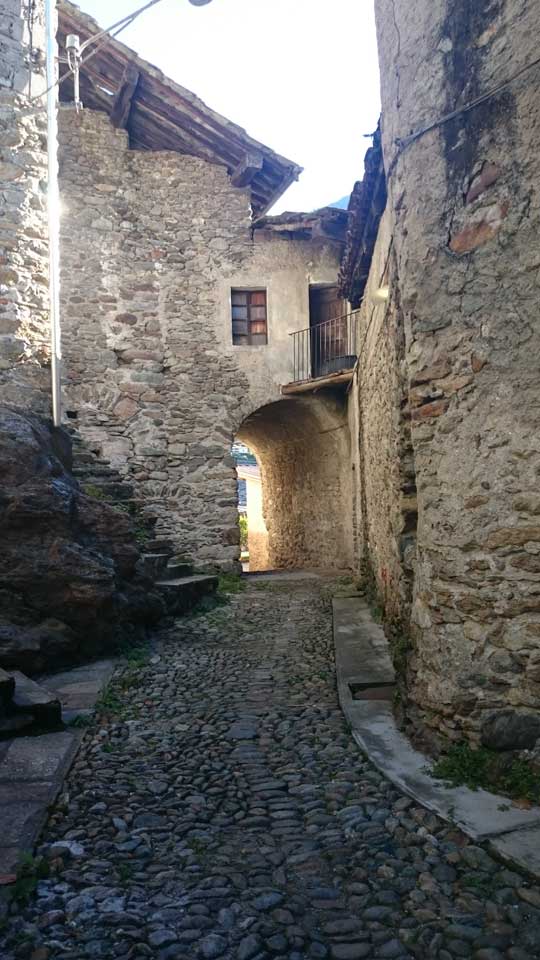 The routes and towns we stayed in were Lausanne, Vevey, Aigle, Martigny, St Maurice, Orsieres, Bourg St Pierre. The early autumnal Alps were beautiful, full of fat cows arrayed in noisy cowbells and crystalline water and air. The final assault on the Swiss side of the Alps ended with a hot chocolate, apple flan and exhaustion at the cafe attached to the thousand year old Hospice du Grand Saint Bernard, a very grand pilgrim hostel run by an Augustinian monastic order. We stayed overnight and ate in the communal dining room and met other travellers.
The routes and towns we stayed in were Lausanne, Vevey, Aigle, Martigny, St Maurice, Orsieres, Bourg St Pierre. The early autumnal Alps were beautiful, full of fat cows arrayed in noisy cowbells and crystalline water and air. The final assault on the Swiss side of the Alps ended with a hot chocolate, apple flan and exhaustion at the cafe attached to the thousand year old Hospice du Grand Saint Bernard, a very grand pilgrim hostel run by an Augustinian monastic order. We stayed overnight and ate in the communal dining room and met other travellers.
The next day we crossed the border into Italy and made it to Etrouble. We walked through endless medieval stone villages, vineyards, chestnut forests and ruined forts. Then we proceeded to Aosta for our first rest day. If we hadn’t been trying to outrun the bad weather a rest day long before this would have been in order. We took an AirBnB flat in the lovely ancient Roman garrison town of Aosta, caught up on washing and lying horizontal and pottered around the town eating gelato and people watching.
The Via Francigena path is well signposted in Italy as the Italians have taken to supporting the pilgrim route more than the Swiss. There is signage in Switzerland but it is definitely not as clear or well placed as in Italy. Navigation however was straight forward having prepared my Android OruxMaps app with an offline OSM map covering the entire path as well as preloaded gpx routes of which I had several alternative versions. Our navigation was sorted and I could finally put my language skills to use.
Italy is Italy and they have their own way of doing things, some charming, others infuriating. As a traveller in a foreign country it can often take time to get used to the local rhythms and customs and by the time you’ve sorted it out you have to leave. The beauty of slow travel and distance walking is you can adapt the day to suit the local customs. Italians are not big on breakfast. The day starts with coffee and a croissant or other sweet pastries or biscuits. Not a good foundation for a day’s walking . If you book a room or hostel and breakfast is included it really isn’t much of a deal, as the best coffee and freshest pastries are served in the bars.
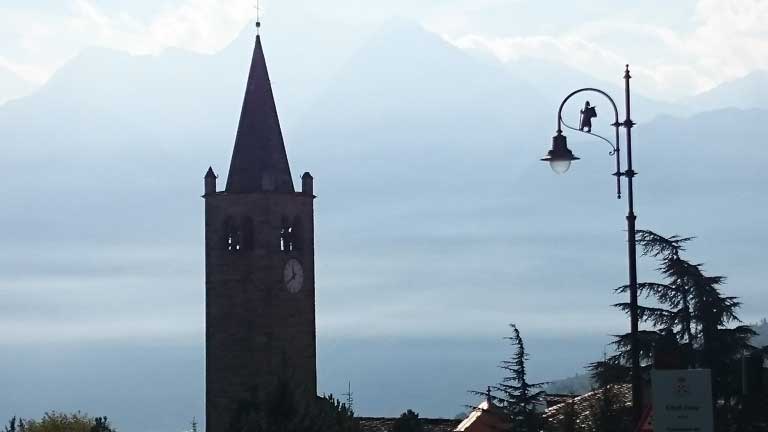 What they miss in breakfast they make up for in lunch, which is taken very seriously everywhere. It is the main meal of the day and in the rural areas everyone closes for lunch and the riposo, a post meal nap. This could last anywhere from five hours in the south of Italy, to one hour in the cities but mostly 2-3 hours in the mid to northern regions. If you have walked all morning on your macchiato and cornetto semplice and want a sustaining lunch, and you are in rural Italy you need to have done your preparation and bought bread and fillings beforehand, as most towns are like ghost towns during the riposo.
What they miss in breakfast they make up for in lunch, which is taken very seriously everywhere. It is the main meal of the day and in the rural areas everyone closes for lunch and the riposo, a post meal nap. This could last anywhere from five hours in the south of Italy, to one hour in the cities but mostly 2-3 hours in the mid to northern regions. If you have walked all morning on your macchiato and cornetto semplice and want a sustaining lunch, and you are in rural Italy you need to have done your preparation and bought bread and fillings beforehand, as most towns are like ghost towns during the riposo.
Having had a big lunch the average Italian isn’t keen to eat again until eight or so. The aperitivo hour, drinks and bar nibbles, starts around six or seven and then restaurants open at 7.30. If you have walked twenty five kms and want to be face down on your bed by 7.30, then fill up on the bar nibbles which are often delicious.
We pressed on from Aosta down through the Aosta Valley, and stopped at Fort Bard, a mountain fort built by the Savoys, burned down by Napoleon, rebuilt and now housing the Museum of the Alps, and having just traversed the Alps we enjoyed poking around the museum.
From Aosta we walked to Nus, St Vincent, Issogne, Pont St Martin, where we had a rest day, then onto Ivrea, Viverone, Santhia through semi rural areas and forests, and onto Vercelli where we stopped in an AirBnB flat for two nights. By now we had left the Aosta region and had crossed into Piedmont, home of the slow food movement and one of the wealthier regions of Italy. Our evening meals were a mix of sublime – the chestnut tortellini with walnut sauce – or tourist slop, a plate of oily pasta with something uncertain dabbed on top.
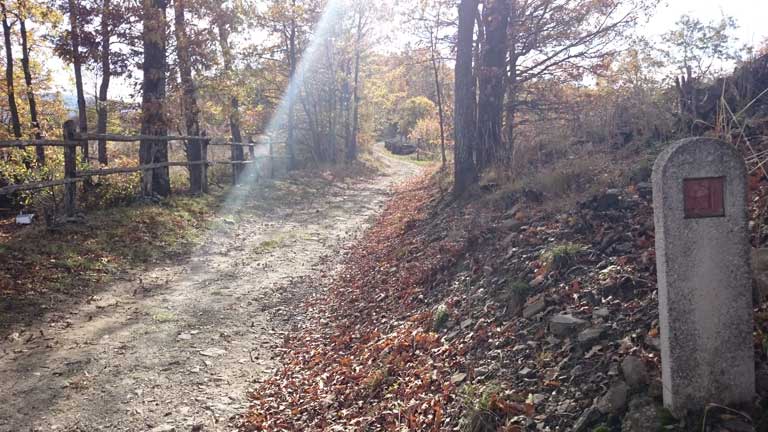 Any establishment that offers pilgrim specials should be avoided, as the food is by no means special, nor is it cheaper. Osteria are a better bet, as they will have a small menu of local specialties where you usually have two choices. Trattoria, restaurants and pizzerias are usually good, it’s often about luck and knowing what to order. Pizza in Italy is different to our more American style pizza and to our way of thinking simpler and more delicious therefore we ate a lot of pizza.
Any establishment that offers pilgrim specials should be avoided, as the food is by no means special, nor is it cheaper. Osteria are a better bet, as they will have a small menu of local specialties where you usually have two choices. Trattoria, restaurants and pizzerias are usually good, it’s often about luck and knowing what to order. Pizza in Italy is different to our more American style pizza and to our way of thinking simpler and more delicious therefore we ate a lot of pizza.
Vercelli was a lovely town to spend a day in and we took our time, wandering around and testing the local gelato, museums and atmosphere. Vercelli is set on the River Po flood plain between Turin and Milan and is the rice bowl of Italy. If you like risotto, then this is the region for you.
From Vercelli we continued on into Lombardia, the most populous and richest province of Italy, and the towns of Robbio, Mortara, Garlasco and then Pavia. The Via Francigena wends its way through the rice fields of Piedmont and Lombardia, following levees, and at first the rice fields were interesting, one could imagine the 1949 movie Bitter Rice with the sultry Silvana Magnano, marvel at the ancient bridges and levees, the nebbia, a floating mist which lies over this part of Italy giving it a foggy, dreamy feel. But after three or four more days of rice fields the imagination begins to fail and they become “not more bloody rice fields”.
Most people, Europeans and Americans, walk the Francigena in the summer. There are endless accounts by said Americans on social media of the huge frogs and huge mosquitoes who frequent these fields in summer, of the heat, humidity and general unpleasant walking We chose the tail end of the European walking season, October, because the temps are mid teens and there are no mozzies. August is the month Europe takes a holiday and as such many attractions are closed and the beaches and lakes crowded. Things ease off in September when the schools and universities go back, and by November the rain and cold weather makes walking unpleasant. Autumn in Europe is a particular favourite of mine as the colours of the forests are magnificent.
We left the rice fields and found ourselves in Pavia, only about an hour from Milan by train, on the Ticino river, a beautiful jewel of a medieval town with several universities, museums, palaces, restaurants and shops. We stayed two nights here. It was small enough to be atmospheric and wealthy enough to have plenty of choices and we speculated about living there for several months as it was such a delight. We stayed in a pilgrim hostel run by Sri Lankan nuns, kind and generous women. Unfortunately there was talk that the hostel was going to stop offering accommodation to pilgrims, no reason given.
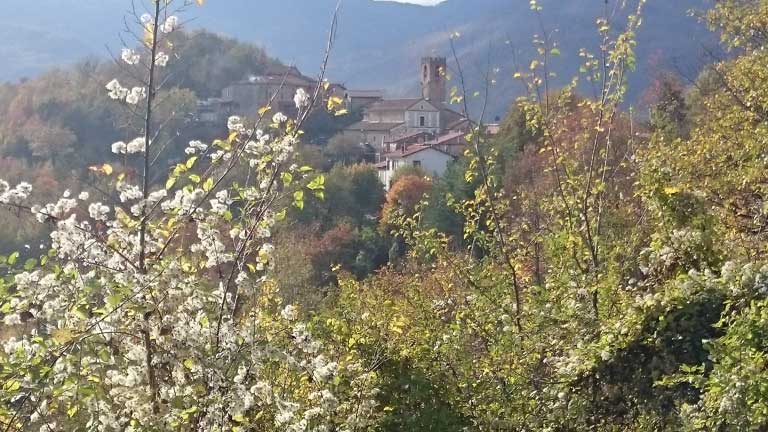 From Pavia we took the train to Milan and stayed in the canal district in an AirBnB flat. We took in the sights, shopped, ate, mooched about, marvelled at the Duomo, the Galleria, the fabulous central railway terminal. People say Milan is just another big city, and yes, it doesn’t have the ancient grandeur of Rome or the pagan pulse of Naples, but it has so many other attractions, including the La Scala Opera House where we did a fascinating tour of their workshops, the student and design canal district, and all the palaces of the Dukes of Lombardy, art galleries, street life and more. From Milan, Phillipa retired with honours having completed 400 kilometres and flew home with Emirates, via Dubai, and I pressed on with the idea of walking all the way to Rome.
From Pavia we took the train to Milan and stayed in the canal district in an AirBnB flat. We took in the sights, shopped, ate, mooched about, marvelled at the Duomo, the Galleria, the fabulous central railway terminal. People say Milan is just another big city, and yes, it doesn’t have the ancient grandeur of Rome or the pagan pulse of Naples, but it has so many other attractions, including the La Scala Opera House where we did a fascinating tour of their workshops, the student and design canal district, and all the palaces of the Dukes of Lombardy, art galleries, street life and more. From Milan, Phillipa retired with honours having completed 400 kilometres and flew home with Emirates, via Dubai, and I pressed on with the idea of walking all the way to Rome.
Walking on my own was a different experience. I could set my own pace, faster, and on this more popular section of the Via Francigena, I met and walked with other pilgrims. We cooked in the hostels together and shared food and tips. I walked on through many renaissance and medieval towns, sometimes not sure what century I was walking in – Piacenza, Fiorenzuola d’Arda, Fidenza, Medesano, Fornovo di Taro, Cassio, Berceto, Montelungo, Pontremoli, Aulla, Sarzana, Marina di Massa, Camaiore, Lucca, Altopascio, San Miniato, Gambassi Terme, San Gimignano, Colle di Val d’Elsa, Monteriggioni, Sienna.
By the time I arrived in Sienna, 300 kms and two weeks later, I’d had enough. It had rained for a couple of days, I’d had equipment failure with my rain gear and boots, and a tooth filling had fallen out giving me grief. We had decided that if I was to tire of the walk we would return in 2017 to finish it, and so we will pick up the walk at Pontremoli in Tuscany in October this year and together we will make it to Rome.

Hello,
Thanks so much for your post. You have me very excited
about walking the Via Francigena. I also plan on beginning at Lausanne. I was just wondering if you got your pilgrim passport in Lausanne? I am disorganised, so are hoping I can pick one up there.
Thanks
Hi, thanks for your post. I’m very excited and planning to start walking from Lausanne mid April 2019 and my idea is to make it to Rome. What was your daily budget? Are there pilgrim accommodations to stay along the way? Did you meet many fellow pilgrims? Any books/guide that you’d recommend to buy?
Thanks a lot and have a great day.
Hi thanks very much for your post very uplifting we hope to do the walk in September 2020 or March April 2021 from Switzerland the great Saint Bernard pass through to Rome any other suggestions would be greatly appreciated thank you
Your reflections brought back treasured memories of my own pilgrimage. It was 2016, and with a good mate we walked from Canterbury to Rome. Crossing from Dover to Calais and later across the River Po, were the only times we didn’t walk. Completed the pilgrimage in 90 days. A memorable and wonderful walk.?